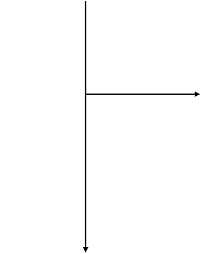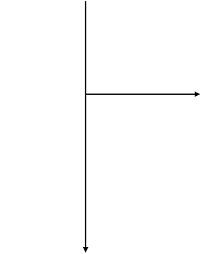7.2 Preparation of work instructions
General requirements for work instructions:
- Correct – from a technical point of view
- Complete
- Current
- Understandable
- Clear (if necessary use a long version for training purposes and a shorter version for everyday use in the production)
The following pages outline points which are often included in work instructions.
Not all the mentioned points are important for all bonding applications, and the list of points is not necessarily complete.
Depending on the bonding process it may be necessary to add special points.
The descriptions relate mainly to manual processing, because this will be relevant for most of the target users of these guidelines.
Much is, however, also relevant for automatic processes. Special issues can subsequently be discussed with the adhesive manufacturer or external advisers.
When preparing work instructions, the following points are often taken into consideration:
1. Preparation of documentation

- Documentation of steps in the production process that relate to quality: Date, time, temperature, humidity (possibly), adhesive / primer (type, batch, expiry date), signature of the person carrying out the work
- Documentation of tests undertaken during the production, noting: Date, time, temperature, humidity (possibly), adhesive / primer (type, batch, expiry date), sample number, signature of the person carrying out the work
- Documentation of the date of opening on all re-sealable containers
- …
2. Ensuring there are optimum ambient conditions

- Mark off the site where work is to be carried out and ensure unauthorised persons do not enter the work area
- Stipulate temperature limits
- If necessary take measures to prevent temperature fluctuations and draughts
- If necessary stipulate limits for the air humidity
- Measure the temperature and air humidity, stipulating the test method and equipment to be used
- Keep silicones, dust and aerosols away from the work area
- Ensure there is adequate light
- Stipulate the necessary storage conditions for adhesives, auxiliary materials and substrates
- Stipulate what must be done when the required ambient conditions cannot be achieved
- …
3. Acclimatising the substrates, primer and adhesives

- Ensure that the substrates, primer and adhesives are not too cold or to warm
- If necessary, stipulate how the surface temperature should be measured and what test method should be used
- Indicate the permitted temperature tolerances
- Stipulate the duration of the accelimatisation step
- Indicate where materials should be acclimatised and the ambient conditions
- …
4. Organising other materials and equipment

At the start of the work instructions include a list of all materials/equipment that are required, accurately specifying type and quantity where appropriate:
- Documentation
- Tools, pens
- Personal protection equipment (gloves, free of silicone and talcum!)
- Tape for marking areas off, warning information, “wet adhesive” stickers
- Substrates, surfaces, coatings
- Cleaning cloths (disposable cloths, free of dust and fluff, not contaminated)
- Cleaning agents, primers, adhesives, adhesive tapes, sealants, smoothing tools, etc.
- Dosing and application units / auxiliary tools such as smoothing trowels, spatulas, guns, nozzles, balances, beakers, etc.
- Spacers
- Stencils, measuring tape, sliding calliper, clocks
- Fixing/positioning aids
- Silicone-free skin cleaning and skin-care products
- …
5. Work safety and environmental protection

- Carry out a risk assessment
- Adapt the production process and materials/equipment to maximise work and environmental protection
- Point out any health risks and explain how these risks can be avoided
- Stipulate the personal protection equipment that should be used and how this should be used
- Stipulate measures for work protection such as air extraction, inhalation prevention and avoiding contact with the skin
- Provide first aid information
- Only use containers that are labelled in accordance with regulations (it is best to use original containers)
- Stipulate how waste must be disposed
- Stipulate what skin cleaning and skin-care products must be used
- Make instructions for use available
- …
6. Testing the accuracy of fit

- Stipulate the test and measurement method
- Test the accuracy of fit after acclimatising the substrates
- Indicate the permitted tolerances
- Stipulate what must be done when the required tolerances cannot be achieved
- …
7. Checking the substrates, primer and adhesives

- Check the identity of the primer and adhesives and the expiry dates for storage
- Note the date of opening on re-sealable containers
- For sealable containers, indicate the maximum time limit for using the material (applies in particular for moisture or light sensitive systems)
- primer and adhesives, check there are no abnormalities (appearance, rheology, odours, etc.)
- Check there is no damage to the substrates and no abnormalities
- Stipulate what must be done if abnormalities are found
- Prepare production-related specimens (e.g. bead peel specimens)
- …
8. Preparing the surfaces of the substrates

- Never touch surfaces with the naked fingers or with contaminated gloves
- If cloths are used for cleaning, use disposable cloths made of fluff-free, non-treated paper and regularly change cloths
- Avoid contaminating the cleaning agents
- When using aqueous cleaning agents, rinse thoroughly and dry
- When using solvents, stipulate evaporation times/li>
- Check the effectiveness of the cleaning: optically, abrasion test, drop method, etc.
- Stipulate what must de bone if residues remain on the surface
- If cleaning is not carried out: check and test the reproducibility
- …
9. Treatment of the surfaces

- Accurately specify the treatment processes
- For an etching pretreatment process: check the bath, avoid contamination of the bath, then rinse the substrates very thoroughly
- Check the effectiveness of the pretreatment process: optically, drop method, conact angle method, test inks, test bonding, etc.
- Stipulate what must be done if abnormalities are found
- After pretreatment, store the substrates for as short a time as possible and protect (if possible prime or bond immediately)
- Check the reproducibility
- …
10. Dosing and applying the primer and adhesive

- Accurately specify the dosing method and where appropriate the mixing method
- Accurately specify the application method, quantity, area and where appropriate the bead geometry
- Always use clean equipment/tools
- Pay attention to the open and closed waiting times; heed the pot-life and skinning time
- Stipulate what must be done if the primer or adhesive has been applied incorrectly
- …
11. Joining the substrates

- Describe the steps in the joining process
- Define the thickness and width of the adhesive film
- Indicate the permitted tolerances
- Stipulate the method to be used for maintaining the correct adhesive film geometry when joining the substrates (defined pressure, spacers, etc.)
- Stipulate the test method to be used for checking the dimensions of the adhesive film
- Stipulate what must de done if the required tolerances have not been achieved
- …
12. Fixing

- Describe the fixing step
- Indicate when the fixture may be removed
- If adhesive tape is used on surfaces that subsequently have to be bonded or coated, check there are no residues of the pressure sensitive adhesives
- Stipulate what must be done if the fixture fails
- …
13. Curing

- Accurately specify the curing process
- Ensure that the conditions for curing can be guaranteed
- Avoid stress build up in the bonded joint by optimising the curingparameters/conditions
- Label cured bonds and protect from unpermitted stress/loads
- Stipulate what must be done if the required curing conditions cannot be achieved
- …



